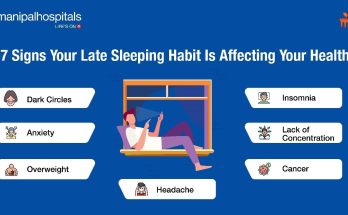As individuals cross the threshold of 40, a subtle yet significant shift often begins to occur in the body’s metabolic landscape, making weight management a considerably more nuanced and challenging endeavor than in younger years. What once seemed like a relatively straightforward equation of “calories in, calories out” can suddenly feel like a complex puzzle, as hormonal changes, a natural decline in muscle mass, and shifts in lifestyle converge to make unwanted weight gain a common complaint. However, navigating weight management successfully after 40 is not an insurmountable task; it requires a strategic, informed, and holistic approach that acknowledges these physiological shifts and adapts habits accordingly. It’s about moving from a reactive response to weight gain to a proactive, sustainable lifestyle designed for long-term health and vitality.
One of the primary biological factors contributing to weight management challenges after 40 is the natural **slowing of metabolism**. As we age, our basal metabolic rate (BMR)—the number of calories our body burns at rest—gradually declines. This slowdown is partly due to a decrease in muscle mass, which is more metabolically active than fat tissue. Every decade past 30, individuals can lose a percentage of their muscle mass if not actively maintained, leading to a corresponding drop in calorie expenditure. Consequently, even if you eat the same amount as you did in your twenties, your body might now require fewer calories, making weight gain almost inevitable if dietary habits remain unchanged. Recognizing this fundamental shift is crucial; it means that maintaining weight often requires either eating slightly less or moving significantly more, or ideally, a combination of both.
To counteract the metabolic slowdown and preserve muscle mass, **prioritizing strength training** becomes absolutely indispensable. While cardiovascular exercise is excellent for heart health and calorie burning, resistance training is the most effective tool for building and maintaining muscle mass. Incorporate strength training sessions at least two to three times a week, focusing on major muscle groups. This doesn’t necessarily mean lifting heavy weights; bodyweight exercises, resistance bands, or light weights can all be effective. The goal is to stimulate muscle protein synthesis, which helps preserve existing muscle and even build new muscle tissue, thereby boosting your metabolism. For instance, a person who starts lifting weights regularly at 45 might find it easier to manage their weight and feel more energetic than someone who relies solely on walking or running, even if they consume a similar diet.
Alongside increased physical activity, a thoughtful and often adjusted approach to **nutrition** is paramount. As calorie needs potentially decrease, every calorie consumed becomes more significant. Focus on nutrient-dense foods that provide satiety without excessive calories. Prioritize lean proteins (chicken, fish, legumes, tofu) which are crucial for muscle repair and help you feel fuller for longer. Increase your intake of fiber-rich fruits, vegetables, and whole grains, which aid digestion, stabilize blood sugar, and contribute to satiety. Minimize highly processed foods, sugary drinks, and refined carbohydrates, which are often calorie-dense but nutritionally poor and can lead to blood sugar spikes and subsequent crashes, fueling cravings. Consciously paying attention to portion sizes also becomes more critical, as even healthy foods can lead to weight gain if consumed in excess.
**Hormonal shifts**, particularly for women entering perimenopause and menopause, also play a significant role. Declining estrogen levels can lead to a redistribution of fat from the hips and thighs to the abdominal area, increasing the risk of visceral fat (fat around organs), which is particularly detrimental to health. While these hormonal changes cannot be entirely prevented, a consistent focus on strength training, nutrient-rich eating, and stress management can help mitigate their impact. For men, a gradual decline in testosterone can also influence body composition and energy levels, making muscle maintenance more challenging. Understanding these hormonal influences allows for a more empathetic and tailored approach to diet and exercise.
Beyond the physiological, **lifestyle factors** often become more pronounced after 40. Careers may become more demanding, family responsibilities might intensify, and sleep patterns can become disrupted. Increased stress can lead to emotional eating and higher cortisol levels, which promote belly fat storage. Reduced sleep can disrupt appetite-regulating hormones. Therefore, effective weight management after 40 must incorporate strategies for stress reduction (e.g., mindfulness, hobbies, social connection) and prioritizing quality sleep (aiming for 7-9 hours consistently). A holistic view recognizes that physical health is deeply intertwined with mental and emotional well-being.
Finally, **patience and consistency** are perhaps the most underestimated virtues in managing weight after 40. The body’s response to dietary and exercise changes may be slower than in younger years, and progress might feel more incremental. Frustration can lead to abandonment of healthy habits. Instead, focus on sustainable, long-term lifestyle changes rather than quick fixes or restrictive diets. Celebrate small victories, track non-scale victories (e.g., improved energy, better sleep, clothes fitting better), and view this period as an opportunity to truly listen to your body and build habits that will serve you well for the rest of your life. Regular consultations with healthcare professionals, including dietitians or personal trainers, can also provide personalized guidance and accountability.
Consider a 45-year-old marketing executive who previously relied on their fast metabolism to stay lean. Now, they find weight creeping up. They realize their usual diet and occasional gym visits aren’t cutting it. They decide to shift their focus: incorporating three strength training sessions per week, consciously reducing portion sizes of high-calorie foods, swapping sugary drinks for water, and prioritizing 7-8 hours of sleep by setting a firm bedtime. While the initial weight loss might not be as rapid as it once was, they notice increased muscle tone, higher energy levels, better sleep, and a gradual, sustainable reduction in waist circumference. This integrated approach, adapted to their changing physiology, empowers them to regain control and foster long-term health.
In conclusion, managing weight after 40 is a journey that requires a refined understanding of the body’s evolving needs and a commitment to strategic lifestyle adjustments. By actively combating metabolic slowdown through consistent strength training, adopting a nutrient-dense and portion-controlled diet, acknowledging and addressing hormonal shifts, prioritizing stress management and sleep, and approaching the process with patience and consistency, individuals can effectively navigate this phase of life. It’s about empowering yourself with knowledge and purposeful habits to maintain not just a healthy weight, but a vibrant and energized quality of life for decades to come.




